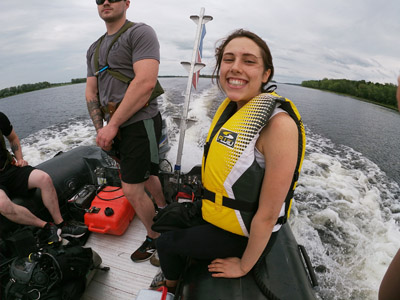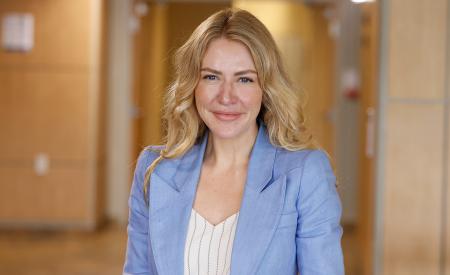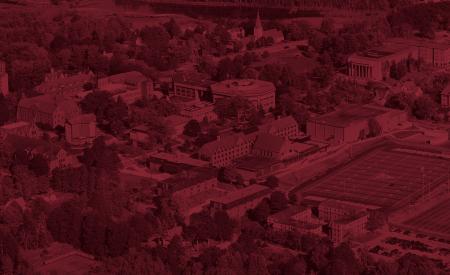Environmental science student researching microplastics in NB rivers
Mount Allison student Amber LeBlanc, like many people, is very concerned about the environment and this has guided her choice of research for her honours degree in Environmental Science. LeBlanc is studying the quantity of microplastics in the Kennebecasis and Nashwaak rivers in New Brunswick, including areas near where treated wastewater is discharged into freshwaters.
 “In terms of environmental work, I think of myself as a warrior — fighting these problems. We try to ignore them but at some point, we will have to do something. I want to tackle this. I care about people, but I also care about the environment,” says LeBlanc.
“In terms of environmental work, I think of myself as a warrior — fighting these problems. We try to ignore them but at some point, we will have to do something. I want to tackle this. I care about people, but I also care about the environment,” says LeBlanc.
LeBlanc’s concern for this global environmental problem stems from a Research Methods in Environmental Science course she completed at Mount Allison. She was part of a group that examined microplastics in remote lakes of Fundy National Park. LeBlanc and her team members discovered microplastics in all of the lakes they sampled, and their abundance was associated with human activity.
For her honours research LeBlanc is looking at the abundance of microplastics in water samples collected in several New Brunswick rivers.
“We sampled upstream and downstream from wastewater treatment plants on the Kennebecasis and Nashwaak rivers. We also sampled at sites between the treatment plants and in remote areas,” she explains.
According to LeBlanc, plastic does not break down easily so regardless of what kind of treatment procedure is used, microplastics are still going to be there in detectable quantities after the treatment if they were originally present in the water.
Preliminary data suggests a pattern of more microplastics in water samples collected downstream of the treatment plants than in the upstream samples.
“This indicates that treated effluent is an important source of this contaminant,” she says.
LeBlanc’s research is part of a larger study, Emerging concerns of microplastic pollution in the Saint John River watershed, that received over $184,000 in funding from Environment and Climate Change Canada (ECCC) through the Atlantic Ecosystems Initiatives program.
One of the researchers leading the project is her supervisor on the project, Dr. Joshua Kurek.
“Amber is well positioned to succeed in her career after Mount Allison. The range of experiences and skills gained in the field, laboratory, and classroom, as part of Amber’s undergraduate degree is impressive,” says Kurek. “She’s sought out and taken full advantage of the opportunities available to motivated students.”
LeBlanc said that it was a lot of fun being outside and collecting the samples. “The field work was great but picking out the plastics was sometimes tedious; however, it was good to have the experience of what real research is like,” she says.
After she graduates, LeBlanc would like to continue to work in science either in the area of communication or policy for government or for an NGO.
“There are lots of issues that need fixing. I just want to be an advocate for the environment.”




